The K6XX Comet Page
Updated 18 July 2020
It certainly has been a long time since this page was edited! More than 20 years.
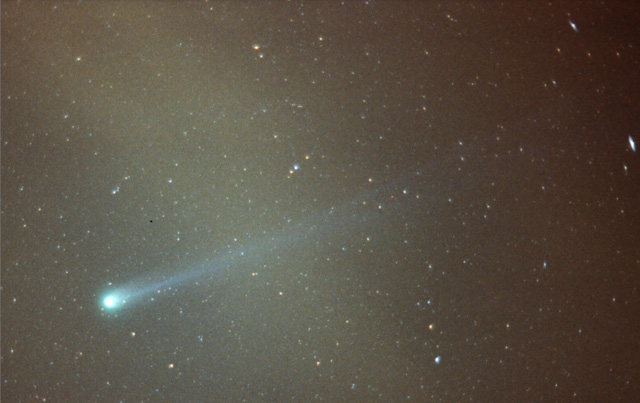
Updated 18 July 2020
It certainly has been a long time since this page was edited! More than 20 years.

Comet Hyakutake was the best comet I had ever watched. I followed it for several weeks, taking hundreds of photographs. This one is a 15 minute exposure using a 135mm lens at f/2.8. The camera was mounted on a motor driven equatorial mount. My shots using slide film came out better, but I don't have the proper hardware to scan them for this page.
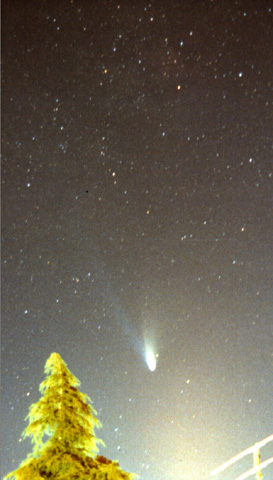

While Hale-Bopp is a bit lower in the sky, the sun was further below the horizon during this exposure.
Now for some more recent photos, using more recent technology not dependent upon the will of the photo-drive up teenager nor the temperature of chemicals.
The first comet visible with this "new" technology was Comet Lovejoy. It wasn't fantastic, but it had a vivid green color and a noticeably twisted tail.
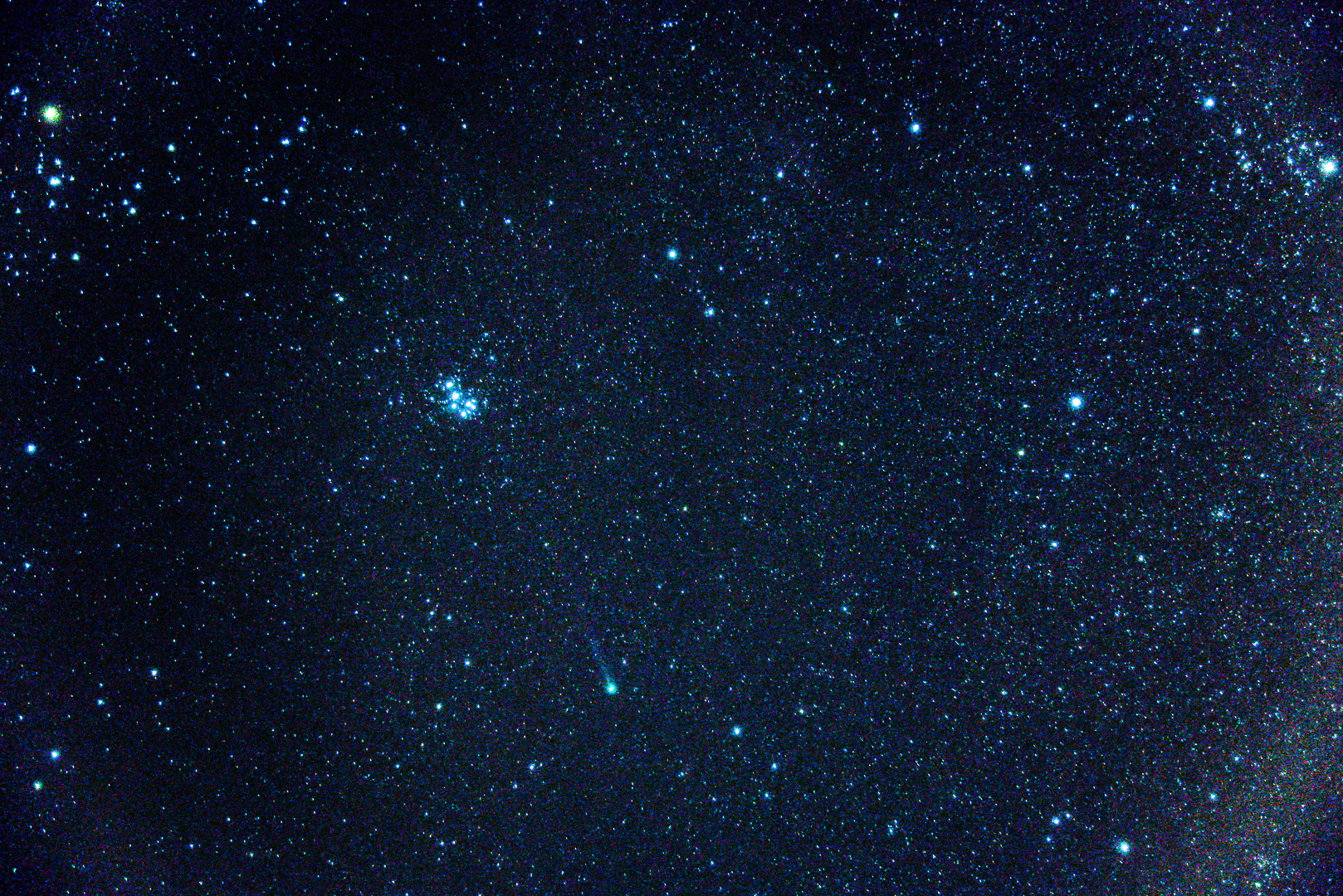
19 January 2015. 50mm F4, 10 sec, ISO 8000. Nikon D750

20 January 2015. 28mm F2.8, 30 sec, ISO 6400. Nikon D750
Wiraten had no great tail, but its coma was quite photogenic.

13 December 2018. 200mm F2.8, 4 sec, ISO 3200. Nikon D500

13 December 2018. 200mm F2.8, 2 sec, ISO 6400
To the fateful year 2020, where one of the few good things is this comet's apparition.
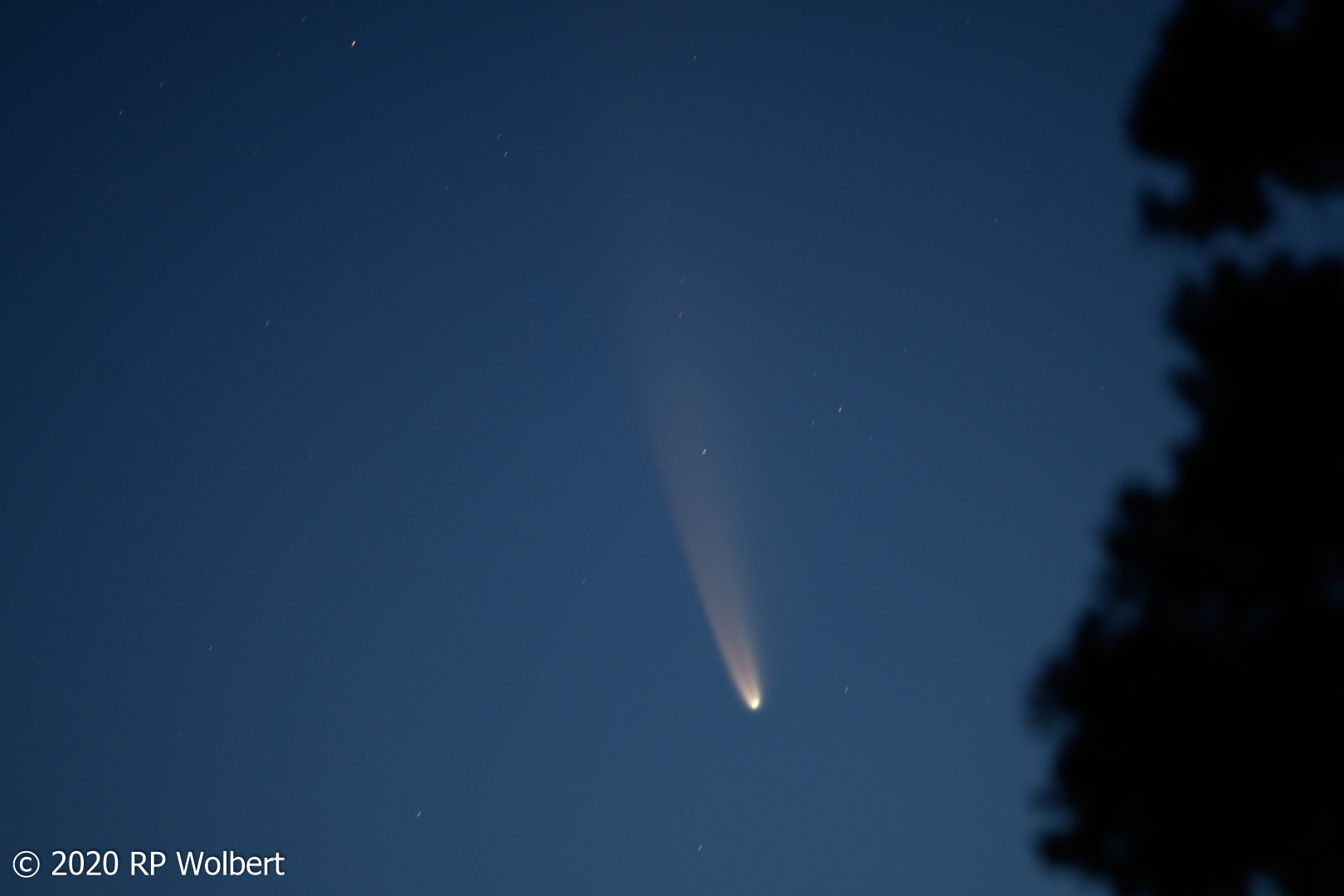
8 July 2020. 500mm f4, 3 sec ISO400 D500
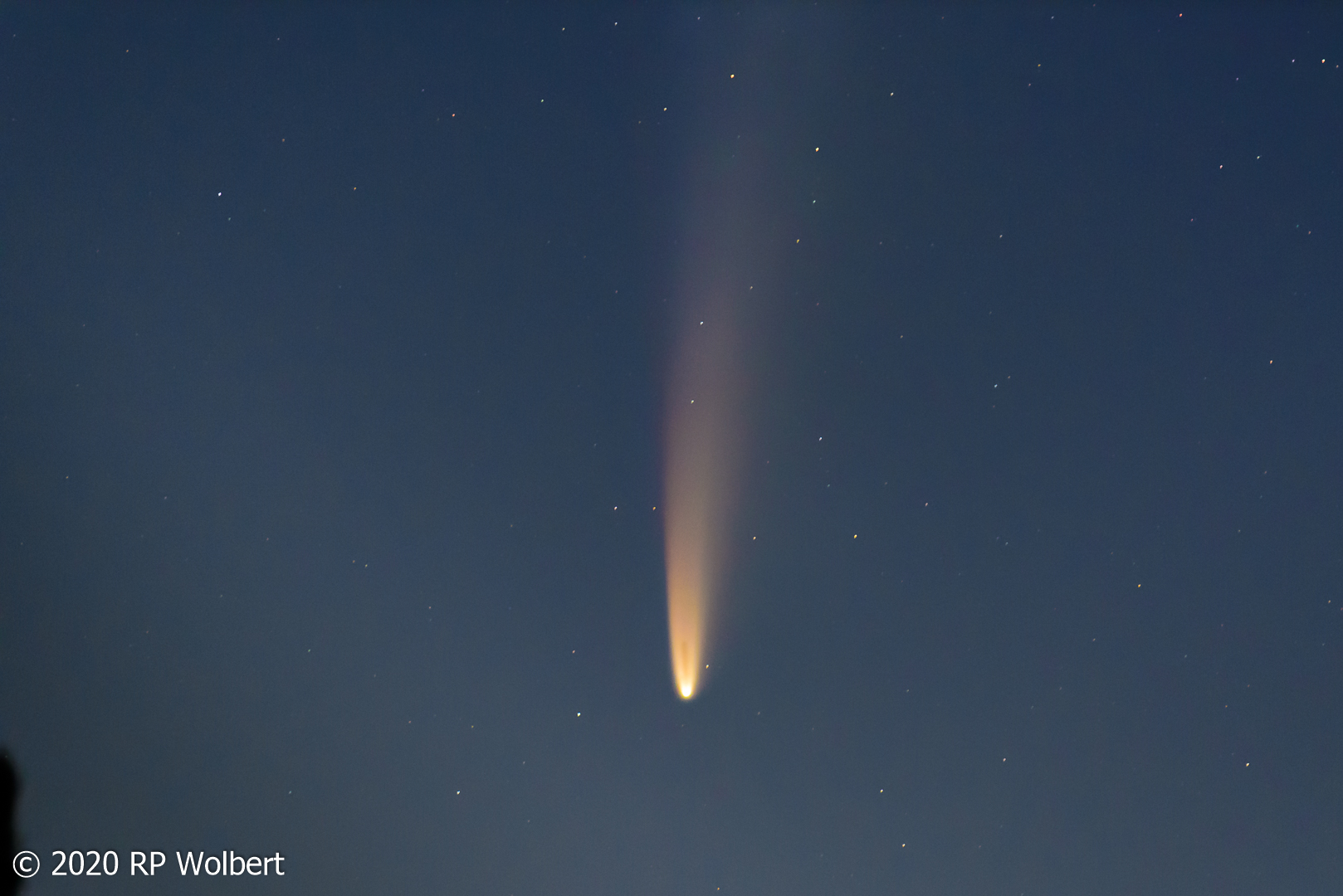
9 July 2020. 500mm f4, 2 sec ISO6400 D750
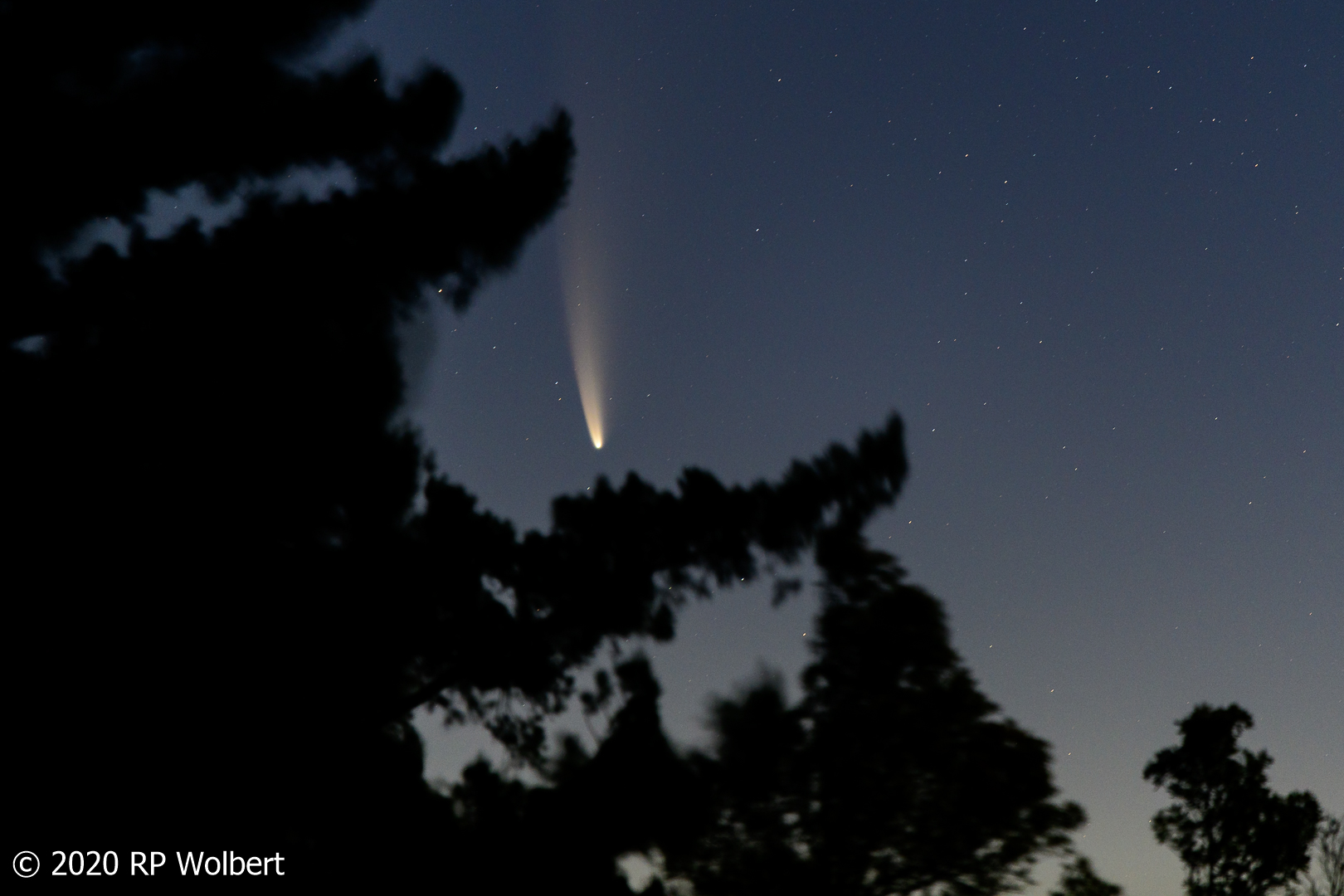
10 July 2020. 200mm f2.8, 4 sec ISO400 D850
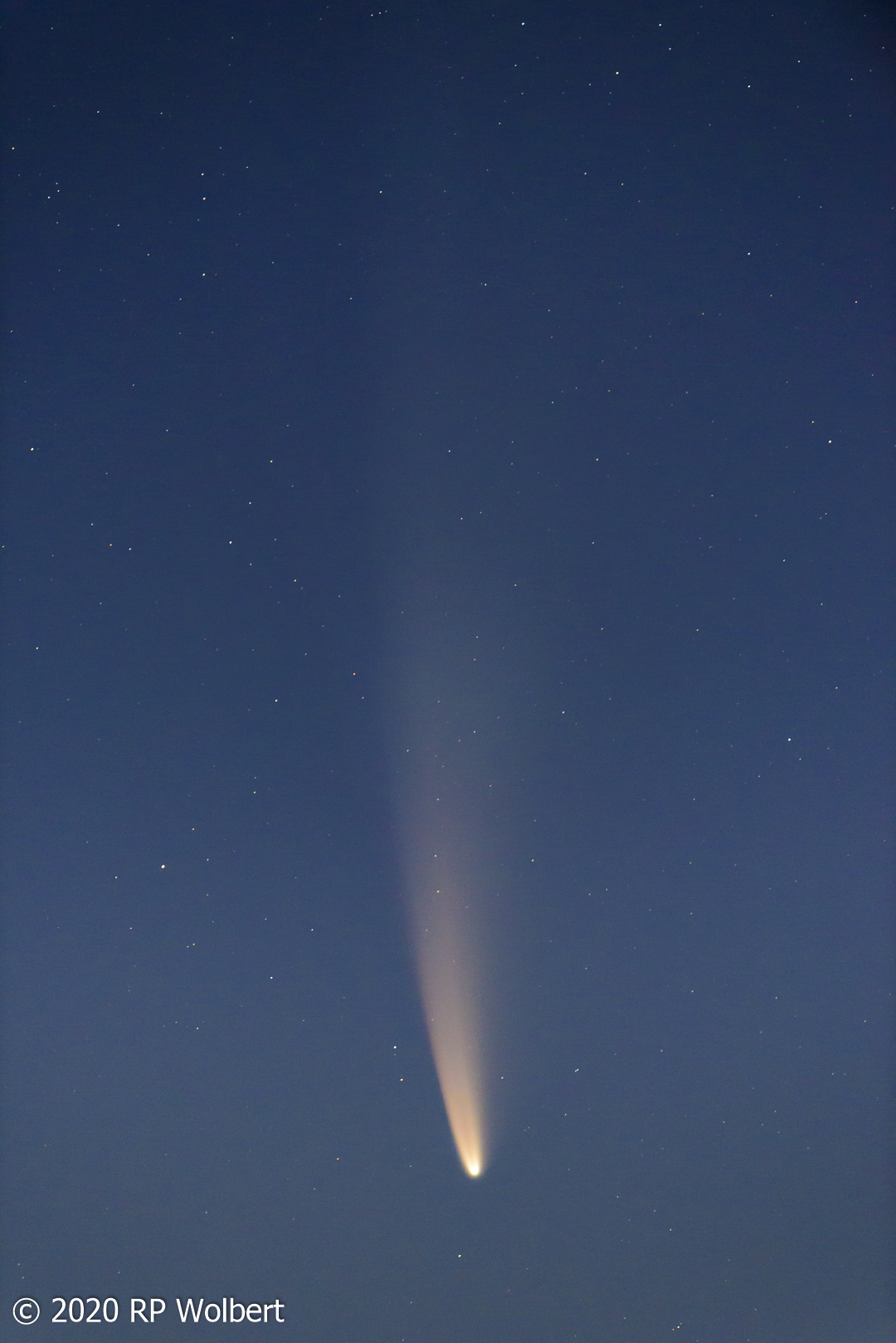
10 July 2020. 500mm f4, 2 sec ISO6400 D750
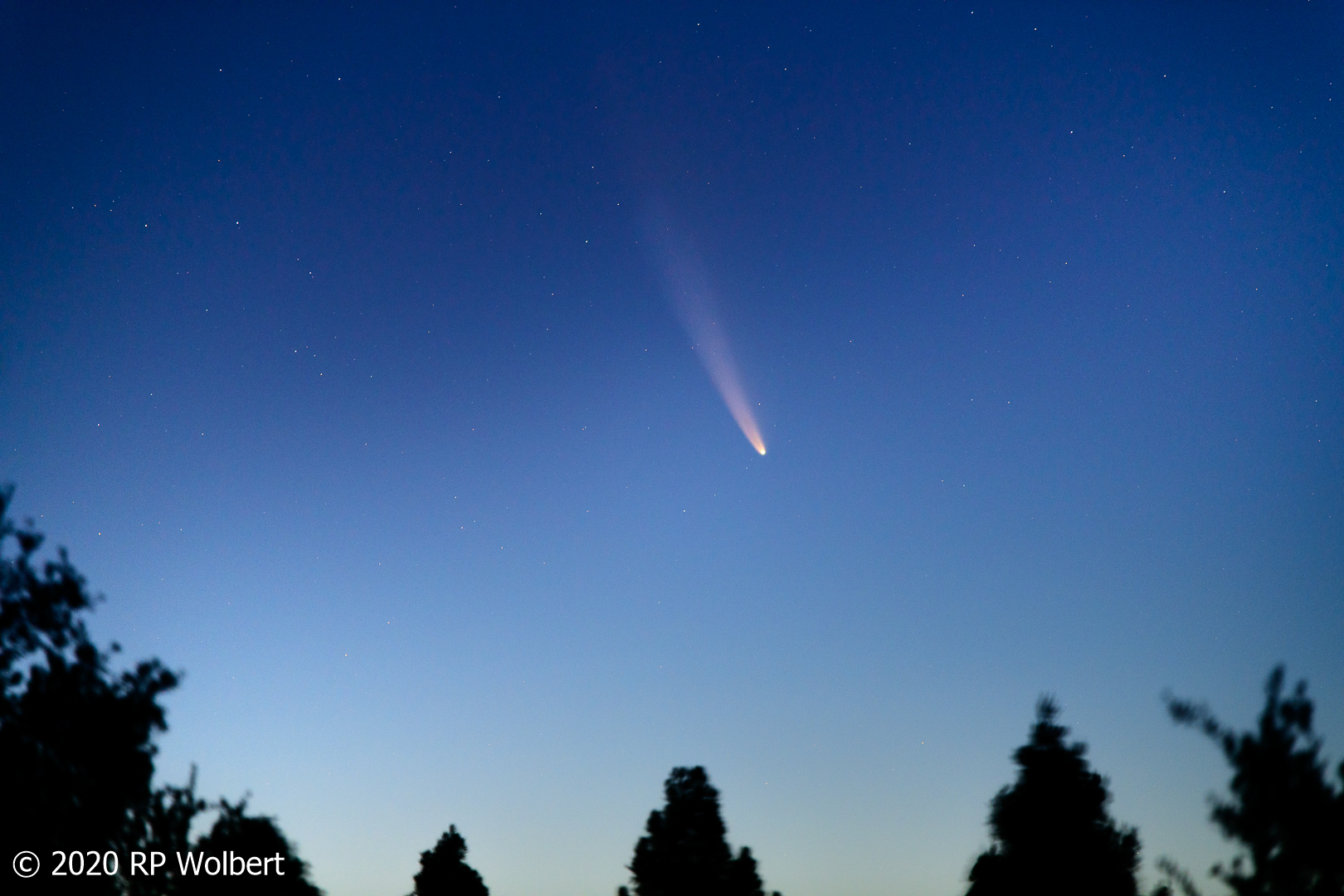
Morning of 13 July 2020. 200mm f2.8, 2 sec ISO400 D850
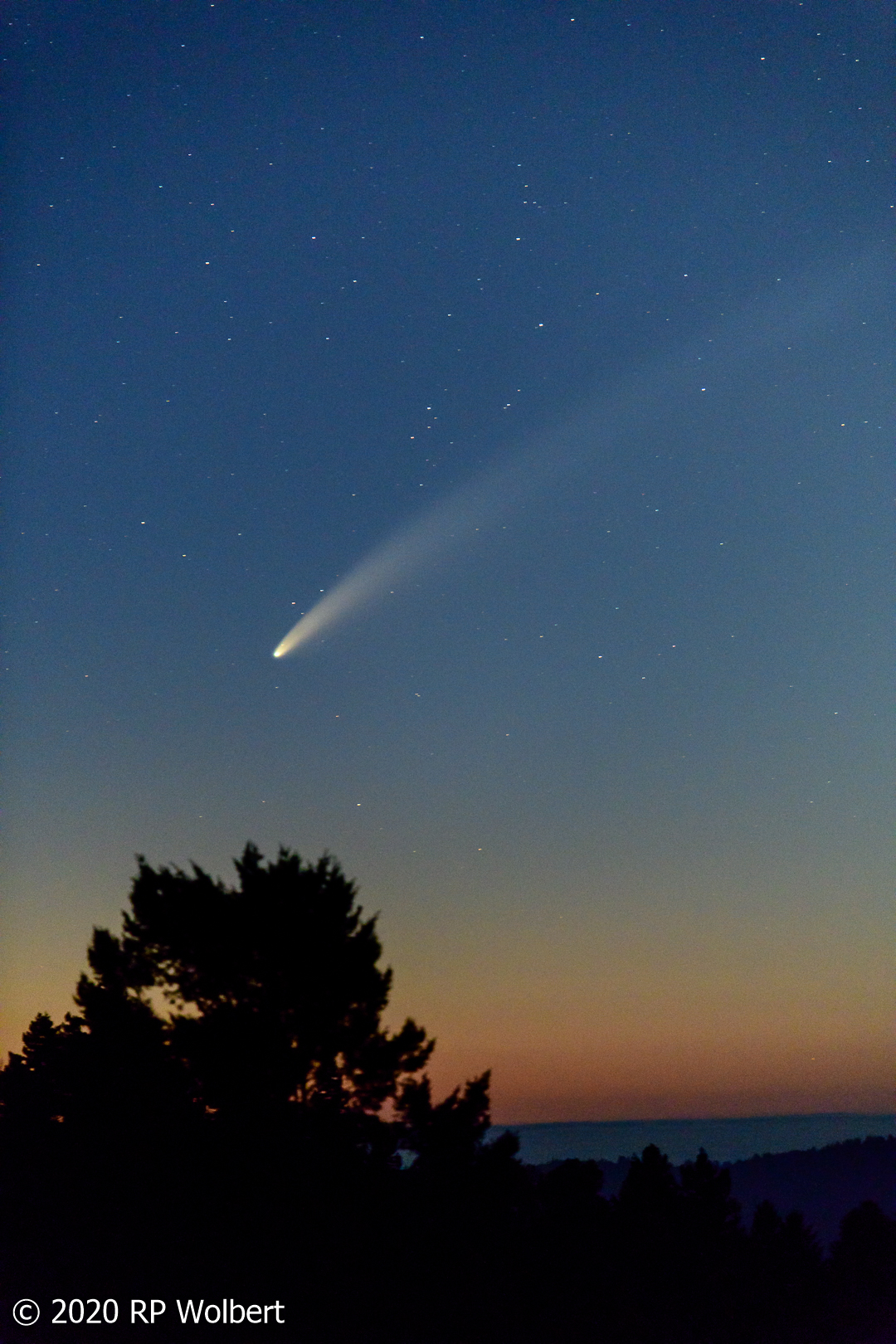
Evening of 13 July 2020. 200mm f2.8, 2 sec ISO1600 D850
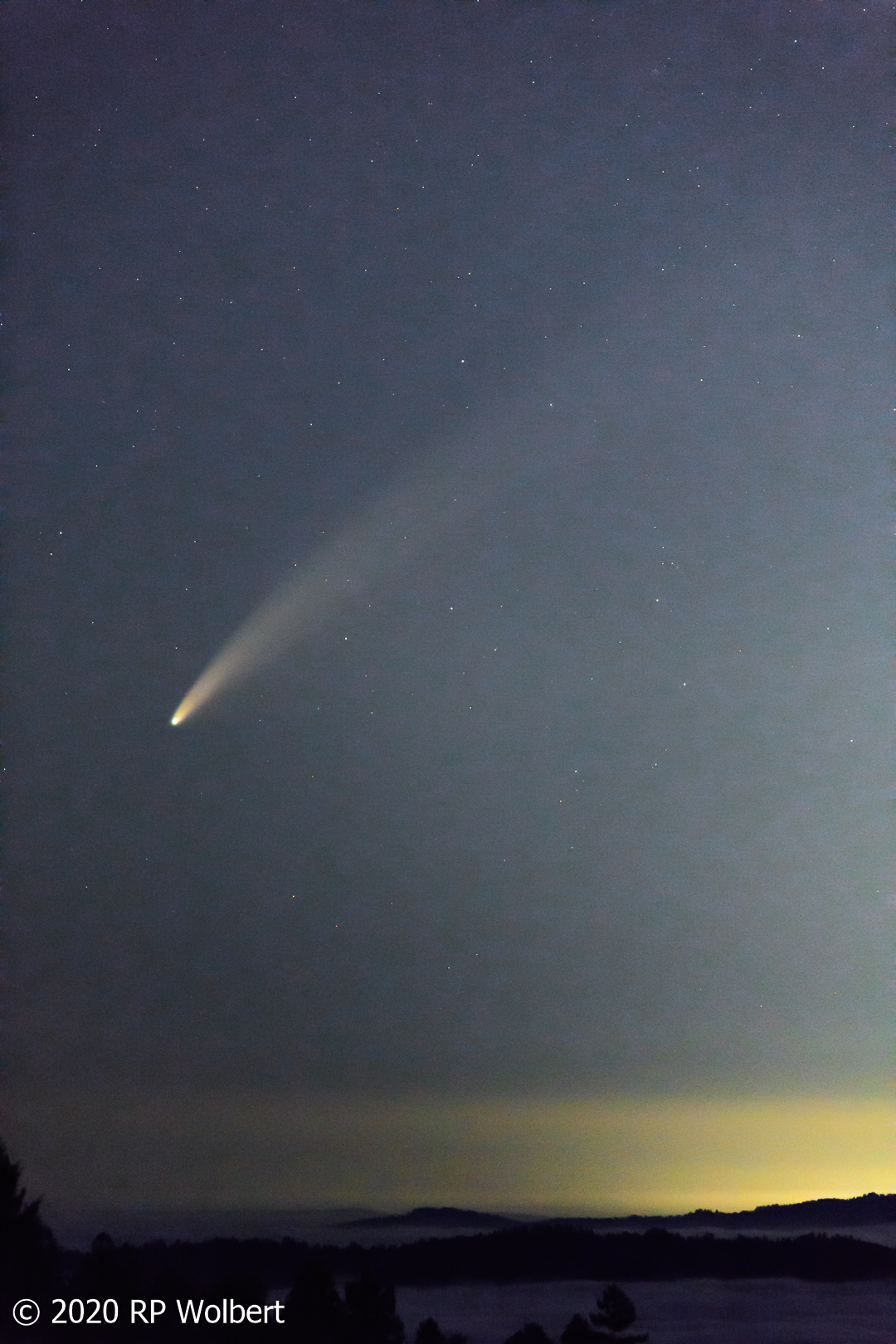
Evening of 14 July 2020. 200mm f2.8, 1 sec ISO6400 D850
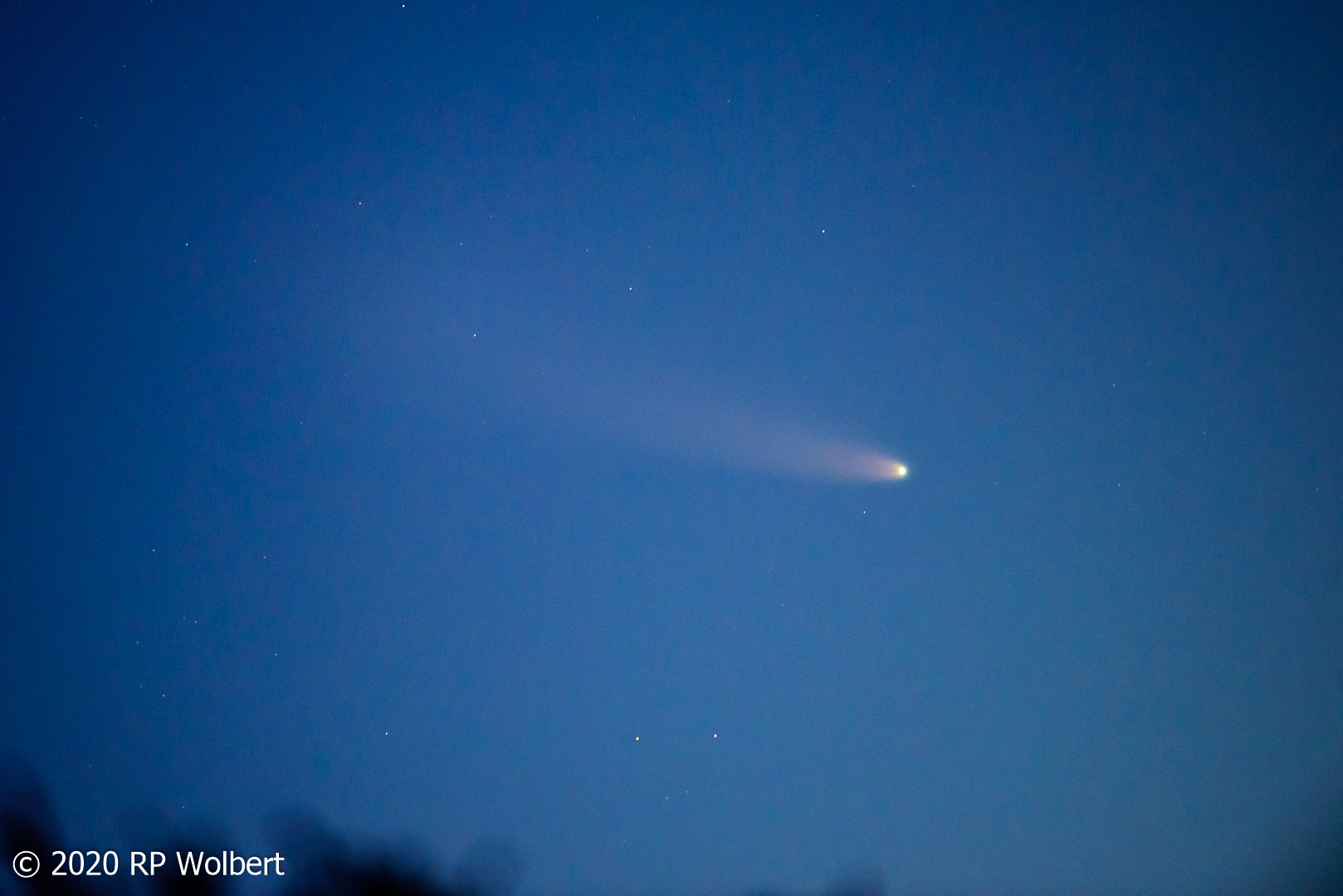
Morning of 15 July 2020. 200mm f2.8, 1 sec ISO1600 D850
It just is not as nice in the morning as it is after sunset.
As I waited atop the tower in the evening, clouds rolled in from the Pacific and the comet wasn't visible. I got lazy and didn't awake to see it the next morning.